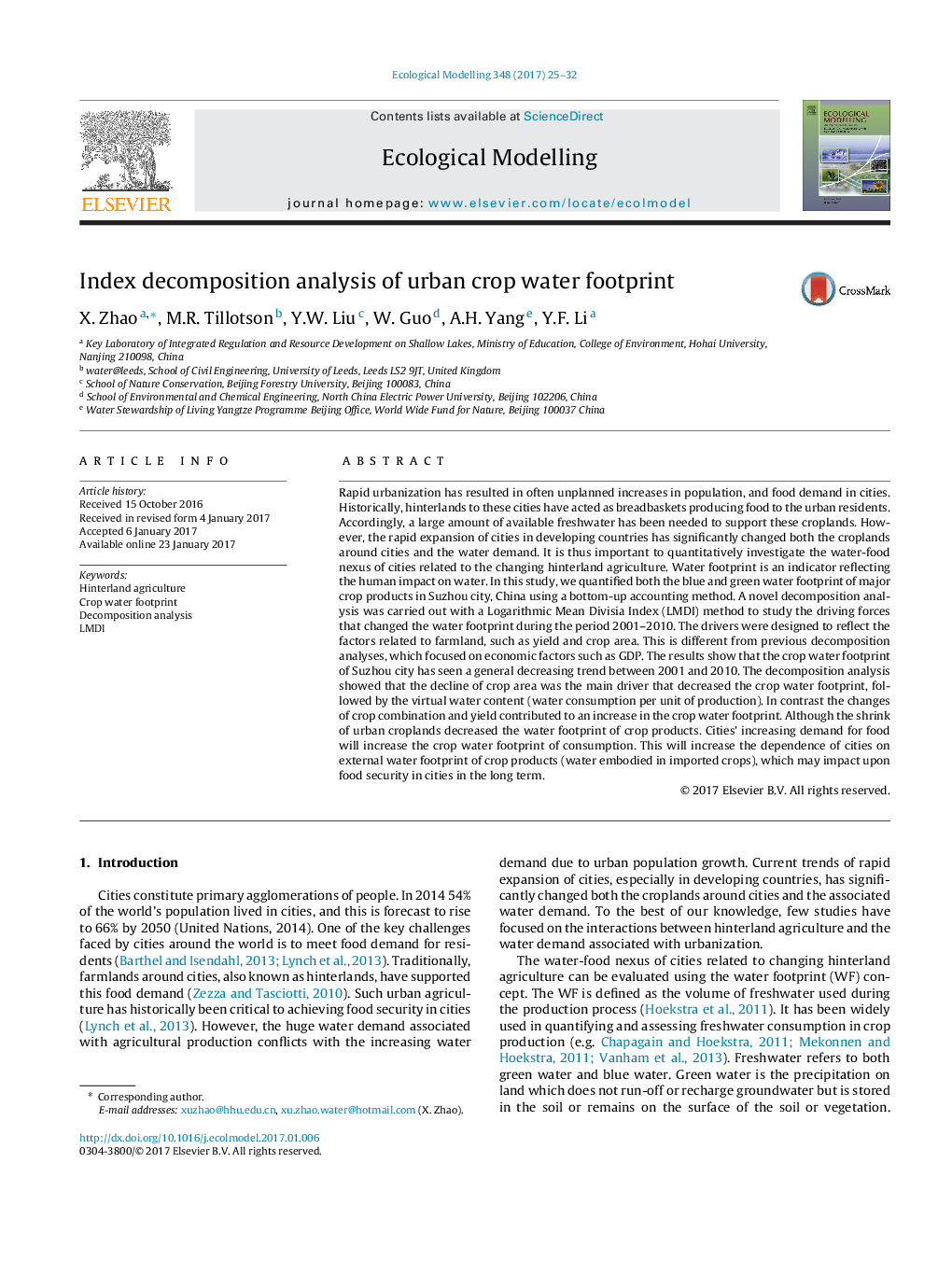| کد مقاله | کد نشریه | سال انتشار | مقاله انگلیسی | نسخه تمام متن |
|---|---|---|---|---|
| 5742316 | 1617399 | 2017 | 8 صفحه PDF | دانلود رایگان |
- Redesign of driving forces for crop water footprint changes.
- Analysis of interaction between hinterland agriculture and water demand.
- Discussion of farmland impact upon urban water demand.
Rapid urbanization has resulted in often unplanned increases in population, and food demand in cities. Historically, hinterlands to these cities have acted as breadbaskets producing food to the urban residents. Accordingly, a large amount of available freshwater has been needed to support these croplands. However, the rapid expansion of cities in developing countries has significantly changed both the croplands around cities and the water demand. It is thus important to quantitatively investigate the water-food nexus of cities related to the changing hinterland agriculture. Water footprint is an indicator reflecting the human impact on water. In this study, we quantified both the blue and green water footprint of major crop products in Suzhou city, China using a bottom-up accounting method. A novel decomposition analysis was carried out with a Logarithmic Mean Divisia Index (LMDI) method to study the driving forces that changed the water footprint during the period 2001-2010. The drivers were designed to reflect the factors related to farmland, such as yield and crop area. This is different from previous decomposition analyses, which focused on economic factors such as GDP. The results show that the crop water footprint of Suzhou city has seen a general decreasing trend between 2001 and 2010. The decomposition analysis showed that the decline of crop area was the main driver that decreased the crop water footprint, followed by the virtual water content (water consumption per unit of production). In contrast the changes of crop combination and yield contributed to an increase in the crop water footprint. Although the shrink of urban croplands decreased the water footprint of crop products. Cities' increasing demand for food will increase the crop water footprint of consumption. This will increase the dependence of cities on external water footprint of crop products (water embodied in imported crops), which may impact upon food security in cities in the long term.
Journal: Ecological Modelling - Volume 348, 24 March 2017, Pages 25-32
